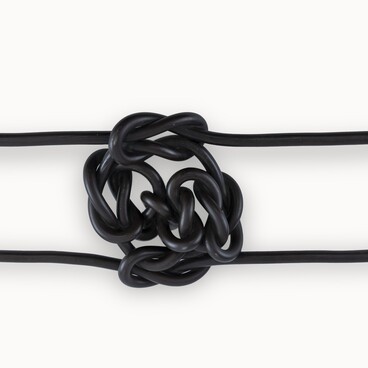In 1896, the legendary craftsman Pavel Nikolayevich Shvetsov (1841–1919) made an unusual table out of steel. It illustrated the technology of making Damascus steel and was created specifically for the Nizhny Novgorod Industrial Exhibition.
The table leg support was made of plates of tough carbon steel and mild refined iron. These plates alternated with each other. The bent end of the legs was welded in a forge and hammered into a square bar. By forge welding, the craftsman attached a bundle of elongated rods to the bar, then twisted them in the middle and welded their upper ends.
Pavel Shvetsov welded the leg to a square tabletop. On its surface, the clearly visible patterns imitated Damascus steel. In the middle of the tabletop, silver inscriptions were made — “Zlat. Arms Factory” and “1896”.
The table was made at the Zlatoust Arms Factory to participate in an industrial and art exhibition in Nizhny Novgorod. It was organized on the left bank of the Oka River, close to the Moscow-Nizhny Novgorod railway. The exhibition opened on May 28, 1896, two weeks after the coronation of Emperor Nicholas II, and lasted four months. Throughout this time, it was visited by about a million people.
The Zlatoust State Plant and the Zlatoust Arms Factory produced a variety of items: iron castings from steel, shells, firebricks, saws, axes, canes, cigarette cases, cutlery, and bladed weapons.
Products of the weapons factory were awarded a gold medal. The Zlatoust plant received a first-category diploma in the Mining and Metallurgy Section. This exhibit has the status of an object of the scientific and technological heritage. It is also important to mention that the table exemplifies the work of the famous talented craftsman of Zlatoust Damascus steel.
Pavel Nikolayevich Shvetsov worked at the Zlatoust plant from the age of seven. Since 1883, together with his brother Nikolay, he conducted experimental melting, constantly improving the quality of chromium stainless steel. During the Russo-Japanese War, gun and armor-piercing steel, cast by Shvetsov in Zlatoust, received high praise.
The table leg support was made of plates of tough carbon steel and mild refined iron. These plates alternated with each other. The bent end of the legs was welded in a forge and hammered into a square bar. By forge welding, the craftsman attached a bundle of elongated rods to the bar, then twisted them in the middle and welded their upper ends.
Pavel Shvetsov welded the leg to a square tabletop. On its surface, the clearly visible patterns imitated Damascus steel. In the middle of the tabletop, silver inscriptions were made — “Zlat. Arms Factory” and “1896”.
The table was made at the Zlatoust Arms Factory to participate in an industrial and art exhibition in Nizhny Novgorod. It was organized on the left bank of the Oka River, close to the Moscow-Nizhny Novgorod railway. The exhibition opened on May 28, 1896, two weeks after the coronation of Emperor Nicholas II, and lasted four months. Throughout this time, it was visited by about a million people.
The Zlatoust State Plant and the Zlatoust Arms Factory produced a variety of items: iron castings from steel, shells, firebricks, saws, axes, canes, cigarette cases, cutlery, and bladed weapons.
Products of the weapons factory were awarded a gold medal. The Zlatoust plant received a first-category diploma in the Mining and Metallurgy Section. This exhibit has the status of an object of the scientific and technological heritage. It is also important to mention that the table exemplifies the work of the famous talented craftsman of Zlatoust Damascus steel.
Pavel Nikolayevich Shvetsov worked at the Zlatoust plant from the age of seven. Since 1883, together with his brother Nikolay, he conducted experimental melting, constantly improving the quality of chromium stainless steel. During the Russo-Japanese War, gun and armor-piercing steel, cast by Shvetsov in Zlatoust, received high praise.




